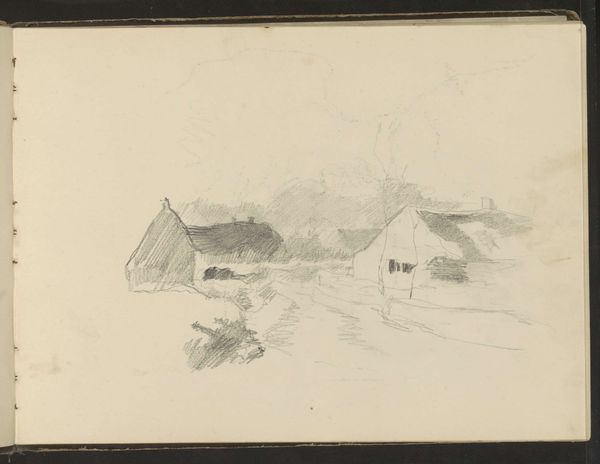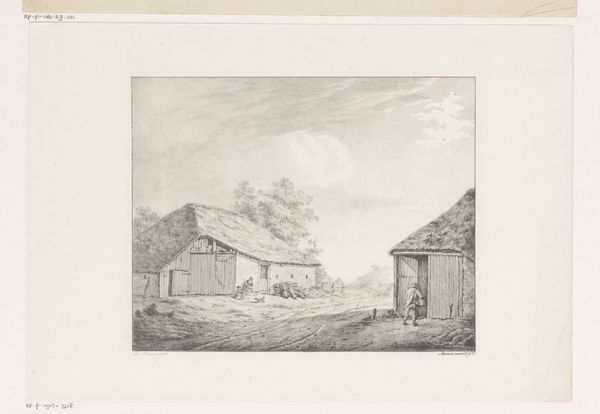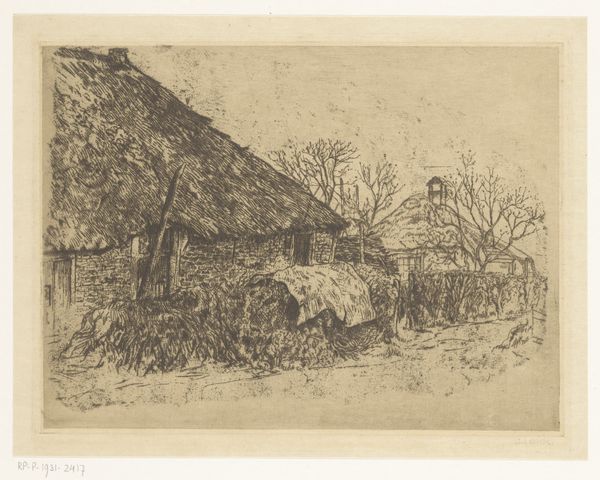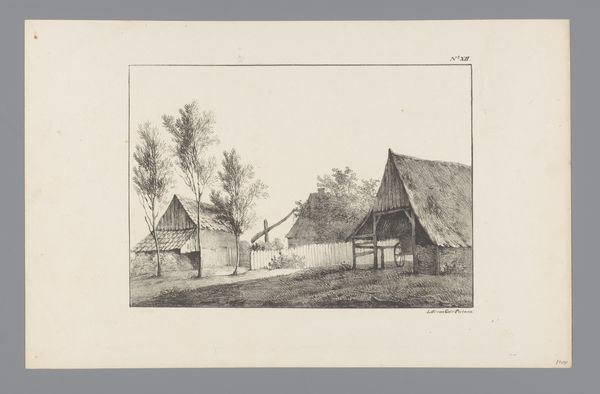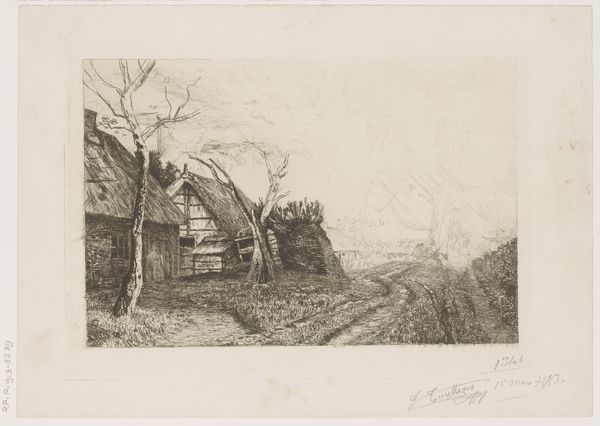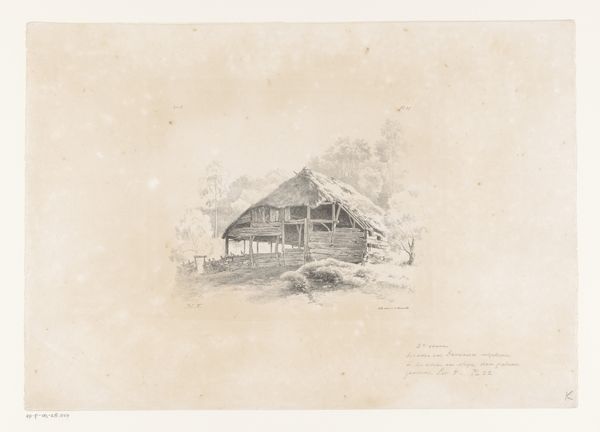
drawing, pencil
#
drawing
#
dutch-golden-age
#
pencil sketch
#
landscape
#
pencil
#
genre-painting
#
realism
Dimensions: height 296 mm, width 441 mm
Copyright: Rijks Museum: Open Domain
Curator: Anton Mauve’s "Schaapskooi", rendered in pencil, offers a fascinating glimpse into rural life of the Netherlands between 1848 and 1888. It’s currently housed at the Rijksmuseum. Editor: It has a lovely quiet feel. The grey tones throughout unify the structure, it’s both substantial and simple at the same time. You immediately notice the textured surfaces. Curator: Exactly. These scenes were integral to the art of the Hague School movement, reflecting a wider shift towards realism. The art market was growing as a consequence of a larger, wealthier urban audience. Artists focused increasingly on depictions of humble lives and local landscapes, as did Mauve. Editor: The thatch roof really stands out. Mauve contrasts the light hitting the cloudy sky against the darker wooden structure and ground to produce a rich surface, and also a somewhat flattened picture plane. It appears, that form is following function in every aspect of its simple design. Curator: Undoubtedly. Think of it this way: while grand historical paintings once symbolized national identity and pride, increasingly artists like Mauve democratized art through humble everyday scenes. The value then was that such simple architectural structure were accessible, normal… Dutch! Editor: And I love the use of line—see how Mauve uses different line weights to imply depth and form? The building feels very stable, grounded in the lower center of the picture plane, although the horizon is cropped out. The subtle rendering communicates so much depth! Curator: Absolutely. The "Schaapskooi" goes beyond the representation of a mere landscape, touching on Dutch cultural identity that evolved during a period of modernization and urbanization. These paintings reinforced that the Dutch should value its roots. Editor: Mauve shows a great attention to line and surface which offers insight into the simplicity of rural architecture, one is forced to ask if Mauve also saw that simplicity as a moral virtue. I feel I've discovered a place to reflect, sheltered, as though within the barn itself. Curator: For me, considering Mauve's social context, he's offering us not just an image, but a statement about national identity and cultural values during a time of significant change. Editor: And for me, the subtleties in technique are where this drawing really speaks, and I am touched by the emotional response it evokes!
Comments
No comments
Be the first to comment and join the conversation on the ultimate creative platform.



